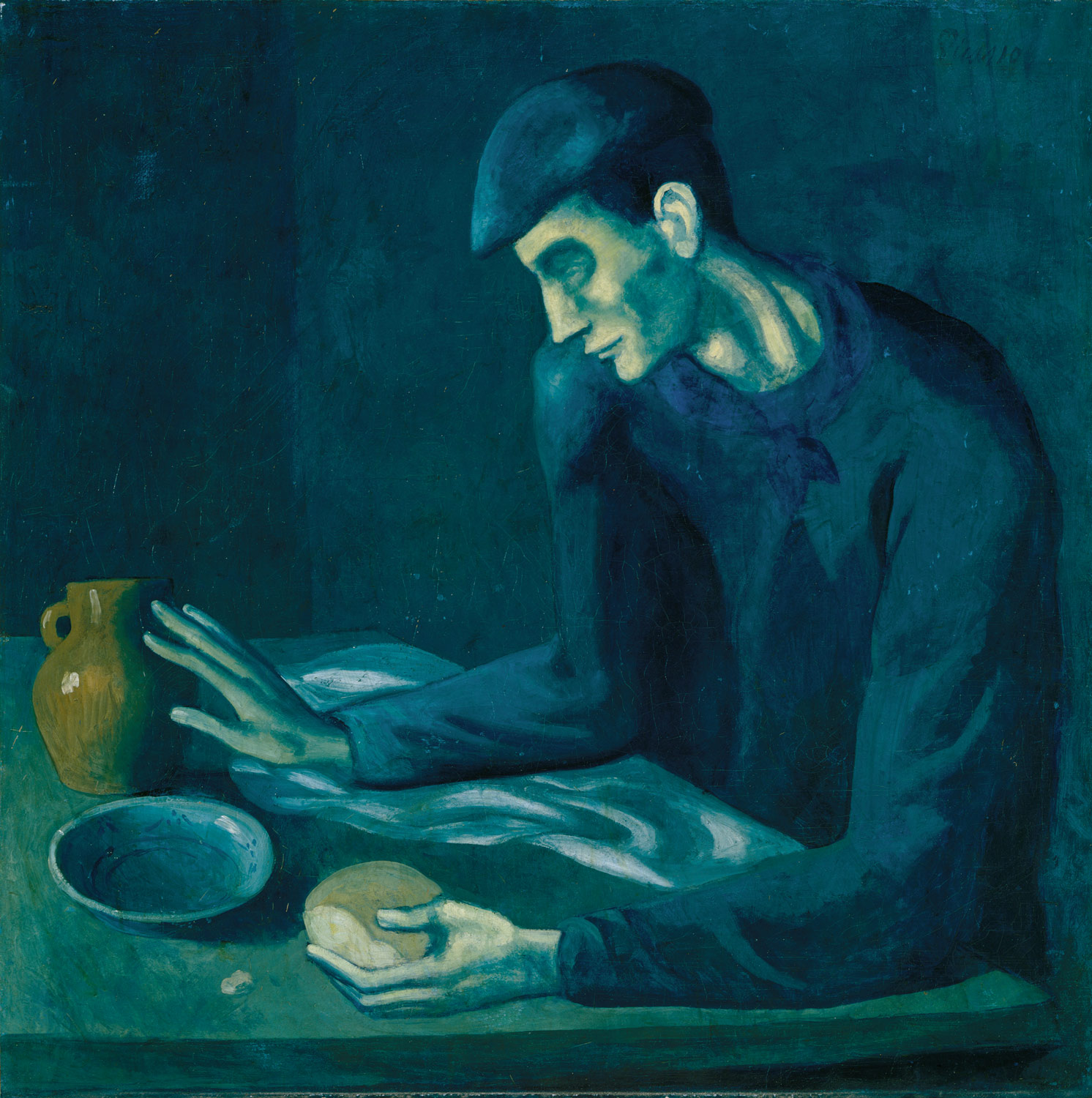As someone working in online education for a while now, I’ve always been aware of the importance of writing alt text for photos and generally trying to adhere to accessibility guidelines. It is important, after all, for anything we publish online to be as inclusive as possible for someone trying to access the information (especially in an educational context where we want students to have equal access to learning new material).
Today, however, I realized how woefully behind I am in my alt text-writing practices. Our guest, Mara Mills, engaged us in a fantastic activity where she asked each of us to write either the alt text or a long description for a piece of art. Specifically, for this piece of art:

“The Blind Man’s Meal” by Pablo Picasso (courtesy of the Met Museum: https://www.metmuseum.org/toah/works-of-art/50.188/).
We had no context for this piece in the conversation, so I did not know that this was a Picasso piece from his “blue period” and, perhaps more importantly, I did not realize that the man in the picture was blind. I challenged myself to write the alt text for this image (which, incidentally, I’ve used as the alt text for this post even though I’m still not quite satisfied with it): “Spindly man hued by blue shadow hunches over a table, grasps bread in one hand, touches a vase with his other, and stares at an empty plate.”
My alt text sort of captures what’s in the picture, of course, but as others were sharing both their alt text descriptions and their longer descriptions, I realized that I was privileging the one thing that the subject of this painting does not have: sight. By directing my own caption to the fact that the man is “staring” at the plate in front of him, I assumed that the man in the painting was sighted, after all. Further still, my choice to privilege the description of the blue tones – rather than the yellow illuminated light on the man’s hands or face – does not quite capture the full mood of the painting. I also completely missed the fact that he’s wearing a hat! We also engaged in some conversation about how to describe the man. Many described him as “gaunt.” Others described him as “melancholy.” As one participant pointed out, no one tried to describe him by his race, a potential elision of an important identifying piece of information about him.
The point is, it became clear that the kinds of things we write about in alt text and long descriptions show our biases and interpretations. This becomes especially fraught for something like writing captions for art, where interpretation plays a huge role in the reception and understanding of the art work. But I can see how the potential erasures in descriptions for photos or images beyond art could become equally as problematic when the writer has to make such key choices about what to include. The decisions become even more fraught for something like alt text, which is often limited to 140 characters!
I don’t know that I’ll become a master crafter of “alt text” any time soon, but this exercise certainly made me more aware of a major communicative challenge: to translate and interpret ideas across media and modes so that we aren’t ignoring particular stories or we aren’t excluding certain people from engaging in conversations. Indeed, when we choose not to write alt text or image descriptions, non-sighted people will have no idea what image is on a particular page, and images play a tremendous role in how we perceive of and process information. Especially in a digital age, where our information feels more visually compelled than ever with popular genres like infographics becoming ubiquitous, we have to be thinking capaciously about how we ensure that people can still understand each other even through genres that rely on one particular mode. While not everyone will be able to appreciate all communicative forms in the same way, we need to continue to make efforts to understand each other so that our forms don’t get in the way of our content.
What are the implications of this for our larger project of understanding what a book in a digital is? To me, this conversation confirmed that, in popular conversations, we have to conceive of reading as something larger than silently skimming words on a page, if only because that kind of reading practice does not feel the same for everyone. In other words, I think that what a lot of the conversation about disability and reading this week has taught me is that arguments about the pitfalls of reading on digital devices assumes that we all understand “reading” to be the same kind of practice for everyone, when it clearly is not. I’m not the first one to realize this: in the conversations about laptop bans in classrooms, many scholars and teachers have pointed out that laptop bans are a huge accessibility problem. But for a public outside of the university setting, I still think it’s important for us to know about the often-invisible reading practices of different kinds of people so that we can acknowledge the diversity in how we construct learning and how we find ourselves in texts.
